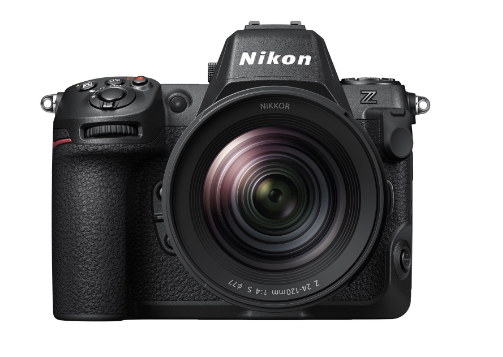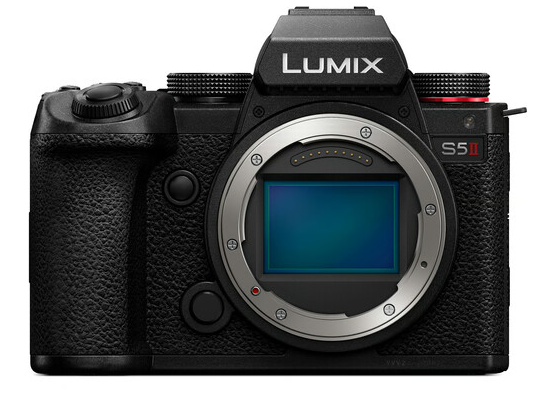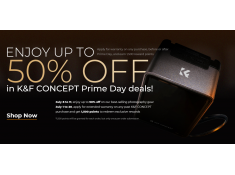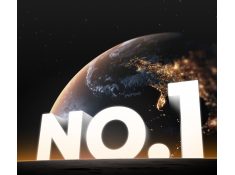The Best Full-Frame Mirrorless Cameras for 2024
Wednesday 08 May 2024
 2.8k
2.8k
 Reproduction without the author's authorization is prohibited
Reproduction without the author's authorization is prohibited
In the previous article about Top 5 Best Beginner Cameras Under $1000, we recommended many cameras suitable for beginners. If you are interested, please click to view. Most of the cameras introduced in the article are APS-C. Generally speaking, full-frame cameras are the main or flagship products of manufacturers (except for Fujifilm). They are usually more expensive than APS-C and have better performance. Why is this? Please read on.
Why choose a full frame camera and why is it better?
Full-frame cameras offer several advantages over cameras with smaller sensors, such as APS-C or Micro Four Thirds sensors:
Better Low Light Performance
You may notice that APSC or smaller sensors produce more noise in low light conditions than full frame sensors.When you shoot at night with a smaller sensor camera, you will find that once you increase the ISO, there will be a lot of noise in the picture. This is because The ISO setting amplifies the sensor’s analog signal before digitization. This amplification affects both the signal (light) and the noise.Shot noise gets amplified along with the signal, maintaining the signal-to-noise ratio.However, read noise (which occurs during signal transfer) remains relatively constant because it happens after amplification.When you brighten an underexposed image in post-processing, both shot noise and read noise get amplified, resulting in more visible noise.If you want to get clean photos at night or in low-light situations where lighting is not available, then you should consider investing in a full-frame camera.Full-frame sensors are larger and can gather more light, which results in better performance in low-light conditions and less noise at higher ISO settings.
Sharpness and Detail
Due to the larger size of the pixels, full-frame cameras can capture more detail and produce sharper images. As mentioned above, Larger pixels collect more light compared to smaller ones. When more light reaches the sensor, it results in better signal-to-noise ratio and improved accuracy in measuring light levels.
Greater Dynamic Range
Full-frame cameras typically have a wider dynamic range, meaning they can capture a greater range of tones from dark to light. That is to say, your photos or videos have a higher contrast, making the bright parts brighter and the dark parts cleaner.This also gives you more room for post-processing. When your photo is underexposed, a higher dynamic range allows you to use LR or PS to restore the exposure to normal levels during post-processing.
Lenses
Full-frame cameras allow you to use professional-level lenses without a crop factor, which can change the effective focal length of the lens. This means you get the true field of view that the lens was designed for.
Bokeh
The larger sensor size provides a shallower depth of field at a given aperture, which is great for achieving a blurred background and emphasizing the subject in portraits and other types of photography. When you are doing portrait photography, you may encounter a cluttered background. If you use a full frame camera with a wider aperture. You can use bokeh to blur the background and highlight your subject.
What is full-frame
A full-frame camera is a digital camera with an image sensor that matches the size of a 35mm film frame. The sensor measures 36mm × 24mm and has an aspect ratio of 3:2. This size is considered the standard or “reference” format to which other sensor sizes are compared. full-frame refers to the size of the sensor being equivalent to a full frame of traditional 35mm film.
The Best Full frame camera: You might want to consider these in 2024
Canon EOS R5
The Canon EOS R5 is a remarkable camera that has garnered significant attention in the photography community.Its performance is very comprehensive, and the 45MP sensor allows its photo quality to reach the first-class level of full-frame. Canon EOS R5 can also shoot 8k 30fps video and 4k 120fps, which can meet all the needs of advanced enthusiasts or entry-level photographers. The only downside is that there aren’t many options for RF mount full-frame lenses, but as long as you can live with it and afford it, the Canon EOS R5 is an absolute beast.
Sensor: The EOS R5 boasts a 45 MP full-frame sensor, which provides excellent image quality and allows for large prints or detailed cropping.
Autofocus: Its autofocus system is top-notch, with 1,053 AF points covering nearly the entire frame. It’s incredibly fast and accurate, making it ideal for capturing moving subjects.
In-Body Image Stabilization (IBIS): The R5 features a 5-axis IBIS system that compensates for camera shake. This stabilization works in conjunction with lens-based stabilization for even better results.
8K Video: The EOS R5 is a game-changer for videographers. It can shoot 8K video at 30fps and 4K video at up to 120fps. The video quality is outstanding, and the camera offers various recording options.
Build and Ergonomics: The R5 has a robust build, weather sealing, and a comfortable grip. The vari-angle touchscreen LCD and high-resolution electronic viewfinder enhance usability.
Dual Card Slots: It features dual card slots (CFexpress and SD UHS-II), allowing for efficient storage and backup during shoots.
Connectivity: The R5 supports Wi-Fi, Bluetooth, and USB-C connectivity for seamless file transfer and remote shooting.
Battery Life: Keep in mind that shooting 8K video can be power-intensive, so consider having extra batteries on hand.

Nikon Z8
The Nikon Z8 is a mid-sized high-end full-frame mirrorless camera that packs impressive features. The positioning of Nikon Z8 is similar to Canon EOS R5. Nikon has delegated the best technology of its camera department to Nikon z8. It looks very tough and the workmanship is very exquisite, like an elegant beast.
Sensor: The Z8 boasts a 45.7 MP stacked CMOS sensor, similar to the range-topping Z9 sports camera. This sensor has parallel readout paths—one for images or video and another for the viewfinder feed with minimal lag. It matches the Z9’s shooting rate of 20fps with Raw and 30fps full-sized JPEG. Additionally, it offers the option to shoot 10-bit HEIF files alongside Raw for HDR images using the HLG curve.
Pre-Burst Option: The Z8 features a pre-burst option, allowing it to start capturing images when the shutter is half-pressed and record up to a second’s worth of images when fully pressed. This feature is available in the 30, 60, and 120fps JPEG modes.
Buffer: Like the Z9, the Z8 has an impressive buffer. It can record over 1000 JPEGs or HE compressed Raws at 20fps. Specifically, it can capture 685 less compressed HE Raws or 79 losslessly compressed Raw files in a burst.
No Mechanical Shutter: Similar to the Z9, the Z8 lacks a mechanical shutter. Instead, it has a shutter shield mechanism that can close when the camera is off to prevent dust ingress during lens changes.
Video Capabilities: The Z8 is no slouch in the video department. It can capture 8K/30p video in formats like ProRes 422 HQ, H.265, or H.264. Additionally, it offers 4K video at up to 120fps (subsampled) or oversampled footage derived from 8K capture at up to 60p.
Build and Handling: The Z8 borrows much of its form factor and handling characteristics from the Nikon D850, widely considered one of the best all-round DSLRs ever made. It’s chunkier than the Z6/Z7 line and features more direct-access buttons, making it a genuine pleasure to use.

Sony a7R V
The Sony a7R V is a remarkable camera that builds upon the success of its predecessor, the a7R IV. The Sony a7R V is one of the highest-pixel cameras among full-frame mirrorless cameras. It is famous for its 60 MP BSI CMOS sensor, coupled with Sony's rich third-party lens group. Although it is priced at around $3800usd, it still It is a very competitive full-frame professional camera.
Sensor:The a7R V features a 60 MP BSI CMOS sensor, which delivers exceptional image quality and resolution.
This high-resolution sensor allows for detailed landscapes, commercial photography, and large prints.
Enhanced Autofocus (AF):The new processor in the a7R V significantly improves subject recognition capabilities.It can recognize and prioritize both human and non-human subjects.
The human recognition system identifies various body parts, making tracking more robust.
Video Capabilities:The a7R V offers impressive video features 8K video at 24p or 4K video at 60p (both with a 1.24x crop). Full-width 4K up to 30p. 10-bit 4:2:2 video options, including S-Log3, S-Cinetone, and HLG.
Body and Controls: The camera features a fully-articulated rear screen on a tilt-out cradle.
It offers reduced-size Raw files (26 MP or 15 MP) for flexibility.Focus bracketing mode with stacking via computer.
Multi-shot pixel shift high-res mode with motion compensation (via computer).
Connectivity and Other Features:
2x2 MIMO Wi-Fi for seamless wireless communication.
UVC/UAC USB-standard video for use as a webcam.
Dual card slots compatible with CFexpress (Type A) and UHS-II SDXC cards.
Price and Availability:The Sony a7R V is available at a recommended price of $3,899, body only.
While it’s $400 more expensive than the a7R IV at launch, supply chain shortages and inflation contribute to the increase.

Panasonic Lumix S1H
The Lumix S1H is the best video camera among the cameras mentioned in this article.The Panasonic Lumix S1H has the distinction of being the first mirrorless camera to receive Netflix certification for use in productions as part of the Netflix Post Technology Alliance. This recognition means that filmmakers can now utilize the relatively affordable S1H as a main camera, provided the footage adheres to specific formats and settings.
Here are the key details about the Lumix S1H’s Netflix certification:
Requirements: To qualify, the S1H must be shot in at least 4K (either 3840 x 2160 pixels or 4096 x 2160 pixels) in V-Log with 4:2:2 10-bit All-I (400Mbps) encoding. These settings ensure high-quality footage.
Additional Considerations: Netflix also recommends setting Noise Reduction and sharpening to zero. Less-strict recommendations include turning off diffraction compensation and vignetting compensation. Regular sensor cleaning and keeping the firmware up to date are also advised.
Versatility: The S1H supports various modes, including full-frame, Super35, and pixel/pixel crop. It’s capable of capturing a dynamic range of more than 14 stops with V-Log.
Affordability: While the Lumix S1H costs around $4000 for a single camera body, it remains the most budget-friendly option on Netflix’s approved list. Other approved cameras include high-end models like ARRI’s Alexa LF, Canon C700, RED Weapon Dragon 8K, and Sony F55.Compare the prices of these cinema cameras, which are as expensive as cars, and you’ll find that the Panasonic Lumix S1H is dirt cheap, which is why it’s one of the best full-frame mirrorless cameras around.
Full frame cameras worth buying in 2024
These four full-frame mirrorless cameras are all excellent cameras. You must consider your own needs when choosing a camera. If you are sure that you need a top-notch full-frame camera, then you can choose among these four cameras. If you need portrait photography, large event photography, you can buy Canon EOS R5. If you need to do landscape photography or wildlife photography, you can buy Nikon z8. If you have very high requirements for pixels, such as printing large posters, you can buy Sony A7r5. If you pay more attention to video capabilities, you should buy panasonic lumix s1h. Of course, there are many excellent full-frame cameras that I have not mentioned due to space reasons, but there is a high probability that you will not be disappointed if you choose the above four cameras.
Statement: all contents and remarks made by K&F CONCEPT 's intranet friends only represent themselves and do not reflect any K&F CONCEPT 's opinions and views.
-
 K&F CONCEPT Prime Day Is Coming – Save up to 50% + Get Member Rewards!Monday 07 July 2025
K&F CONCEPT Prime Day Is Coming – Save up to 50% + Get Member Rewards!Monday 07 July 2025 -
 How K&F CONCEPT Became the No.1 Filter Brand for Photographers in 2025Monday 07 July 2025
How K&F CONCEPT Became the No.1 Filter Brand for Photographers in 2025Monday 07 July 2025 -
 Kono releases new color negative film KonoColor200Monday 30 June 2025
Kono releases new color negative film KonoColor200Monday 30 June 2025 -
 Canon's new EOS R8V may be releasedMonday 30 June 2025
Canon's new EOS R8V may be releasedMonday 30 June 2025 -
 Is Sony's new FX2 movie camera bleak?Friday 27 June 2025
Is Sony's new FX2 movie camera bleak?Friday 27 June 2025








